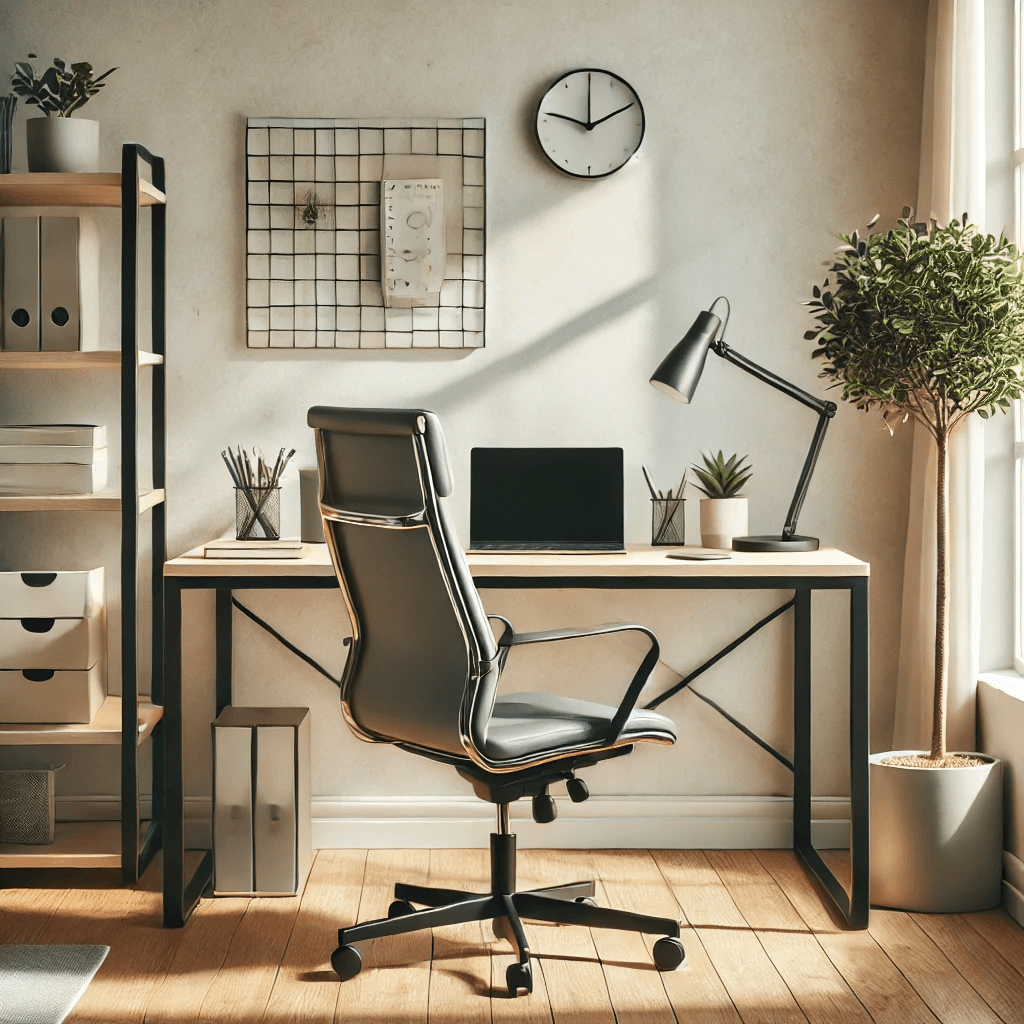Working from home has become more common than ever, and having a dedicated home office is key to staying productive. A well-designed workspace not only helps you focus but also keeps you motivated and organized. In today’s fast-paced world, where distractions are just a click away, creating an effective workspace is essential to achieving professional goals while maintaining personal well-being.
This article will guide you through practical steps to design a home office that enhances productivity. Whether you’re setting up your workspace for the first time or looking to upgrade your current setup, these tips will help you build an efficient and inspiring environment.
Choosing the Right Location
The first step to creating a productive home office is finding the perfect spot. The location of your workspace can greatly influence your focus and overall productivity. Selecting the right area requires careful consideration of your home’s layout and your personal work habits.
Evaluate Your Space
Selecting the right location starts with evaluating the available spaces in your home.
- Look for areas away from high-traffic zones to avoid distractions.
- Consider repurposing unused spaces like a guest room or corner in a bedroom.
- Ensure there’s enough room to accommodate your work essentials comfortably.
If space is limited, think creatively about utilizing corners or underutilized nooks. Even a small, well-organized area can serve as a functional home office if designed thoughtfully.
Prioritize Natural Light
Natural light can significantly improve your mood and energy levels. Position your desk near a window to take advantage of daylight. If natural light isn’t available, opt for good quality task lighting to reduce eye strain. Exposure to natural light not only enhances focus but also supports a healthier sleep cycle, helping you stay energized throughout the day.
Consider Accessibility
While your workspace should be separate from household activities, it also needs to be easy to access. Choose a spot that strikes the right balance between privacy and convenience, ensuring you can stay focused without feeling isolated. Additionally, consider proximity to power outlets and internet connectivity for a seamless work experience.
Setting Up Ergonomic Furniture
Comfort and functionality are crucial when setting up your home office. Ergonomic furniture helps reduce physical strain and improves posture, enabling you to work efficiently for extended periods.
The Importance of a Comfortable Chair
An ergonomic chair is a must-have for a productive workspace. Look for one with:
- Adjustable height to align with your desk.
- Lumbar support to prevent back pain.
- Comfortable padding and armrests for long hours of work.
Investing in a high-quality chair might seem costly, but it’s a long-term investment in your health and productivity. Poor seating can lead to back pain, fatigue, and decreased focus, so prioritize comfort when choosing your chair.
Selecting a Functional Desk
Your desk should fit your space while providing enough surface area for your work needs. A sturdy desk with a smooth surface and adjustable height options is ideal. Make sure it allows proper legroom and accommodates any additional equipment, such as monitors or keyboards. If space is a concern, consider a foldable desk or a wall-mounted table to maximize your area.
Arranging Furniture for Productivity
Arrange your furniture to create an efficient workflow. For example:
- Keep frequently used items within arm’s reach.
- Position your chair and desk to minimize movement and maximize comfort.
- Leave enough space to move around freely and avoid clutter.
An efficient layout helps you focus on tasks without unnecessary distractions, ensuring that everything you need is accessible and organized.
Organizing Your Workspace
A tidy and organized workspace is essential for maintaining focus and productivity. Start by decluttering your desk and keeping only the essentials, like your computer and a few office supplies. Regular cleaning and organization prevent distractions and create a calming environment.
Invest in smart storage solutions, such as shelves, cabinets, or drawer organizers, to keep your workspace neat. Labeling and categorizing items help you quickly find what you need. Multifunctional furniture, like desks with built-in storage, can also maximize your space while keeping everything organized. Taking a few minutes daily to tidy up ensures your workspace remains efficient and clutter-free.
Adding Productivity-Boosting Elements
Adding thoughtful elements to your home office can enhance focus and motivation. Incorporating greenery, such as low-maintenance plants like succulents or snake plants, creates a calming atmosphere and improves air quality. The presence of plants has been shown to reduce stress and increase creativity, making them a valuable addition to any workspace.
Personalizing your space with items like a small photo, inspirational art, or a cozy cushion makes it more inviting. These personal touches help create an emotional connection to your workspace, making it a place you enjoy spending time. However, avoid overloading your space with too many decorative items, as this can lead to visual clutter.
Optimizing technology is another key to boosting productivity. Invest in noise-canceling headphones to minimize distractions, dual monitors for multitasking, and adjustable lighting to reduce eye strain. These simple additions can significantly improve your work experience and streamline your workflow.
Maintaining a Productive Atmosphere
Maintaining your workspace is crucial for long-term productivity. Set clear boundaries by defining your work hours and communicating them to family or roommates. This helps separate work life from personal life. When your boundaries are respected, it becomes easier to focus on work during designated hours and fully disconnect afterward.
A daily routine, with specific work hours and scheduled breaks, keeps you focused and prevents burnout. Start your day with a clear plan, outlining the tasks you aim to complete. Incorporating regular breaks, such as a short walk or stretching session, helps refresh your mind and maintain productivity throughout the day.
Additionally, regularly evaluate your workspace and make adjustments as needed. Rearrange furniture, upgrade tools, or address discomforts to ensure your home office remains a productive and comfortable environment. Small tweaks, like adjusting lighting or upgrading your chair, can have a significant impact on your overall experience.
Conclusion
Creating a home office that boosts productivity involves careful planning and thoughtful design. From choosing the right location and ergonomic furniture to adding productivity-enhancing elements, each step contributes to a functional and inspiring workspace. Organizing your space and maintaining a productive atmosphere ensure that your home office supports your goals and keeps you motivated.
By setting boundaries and refining your workspace as needed, you can enjoy a productive and stress-free work-from-home experience. Start transforming your home office today and unlock your full potential!




